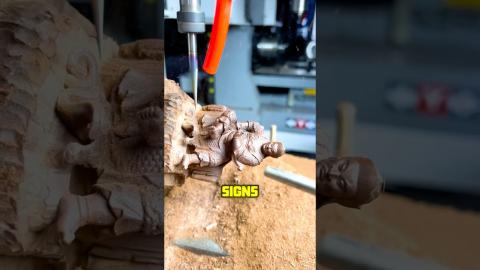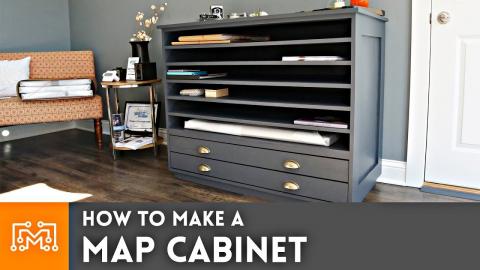How to make a Langstroth Beehive // Woodworking
Description
We made a Langstroth Beehive for a colony of bees that moved into my back porch. Thanks to Google Images for sponsoring this video and helping us find inspiration for our DIY projects.
https://www.google.com/search?q=beehive%20ideas%20&tbm=isch
Subscribe to my channel: http://bit.ly/1k8msFr
Second Channel: http://bit.ly/iltms-2
MORE PROJECTS, POSTS AND EVENTS
http://www.iliketomakestuff.com
TOOLS & SUPPLIES THAT WE USED(affiliate links):
https://kit.com/iliketomakestuff/how-to-make-a-langstroth-beehive
https://kit.com/iliketomakestuff/my-woodworking-tools
https://kit.com/iliketomakestuff/shop-safety-gear
I WROTE A BOOK!!
http://www.iliketomakestuff.com/makingtime
Want to support ILTMS? Get exclusive content and more...
http://www.iliketomakestuff.com/patreon
BUY A SHIRT, STICKER, NOTEBOOK, DIGITAL PLANS and MORE!!
http://www.iliketomakestuff.com/store
FOLLOW:
http://twitter.com/iliketomakestuf
http://www.twitch.tv/iliketomakestuff
http://instagram.com/iliketomakestuff
http://facebook.com/iltms
MUSIC: http://share.epidemicsound.com/iltms
I'm not saying this as a disclaimer, well maybe, but I really think the success of this project was largely in part from the advice from our local beekeeping community. I looked up the group on Facebook and the leader, Richie, came out to check on our bee situation. A lot of people have a general fear of bees, but I didn't want to unnecessarily harm the creatures in any way. Richie suggested that we remove the wall panel and carefully remove any honey comb that the bess had made and transfer them to a Langstroth Beehive. There are many beehive designs, but the Langstroth is very versatile and can grow as the colony grows.
I found some plans online to make a standard Langstroth hive, and I used Google Images to research different hive ideas. My favorite was a Langstroth made out of cedar with a simple metal roof, so I decided to emulate it. Once we finished the hive, Richie planned on coming back to help me move the hive into their new home.
If you aren't familiar with beehives, let me fill you in, specifically the Langstroth hive. It is a system of boxes, some deep and some shallow, that stack on top of each other. The bees brood, or incubate and hatch new bees, in the deeper, lower boxes while the workers bees store honey in the shallower, upper boxes. There is a base with a landing pad and two separate lids that cap the whole hive.
To make the deep and shallow boxes, I cut up some cedar boards and joined them using box joints. Because I'm not sure how many bees are living in the wall, I'm going to make enough boxes for 2 hives. Once the boxes were glued together, I used a router to add a rabbet on the top so that the individual beehive frames will hang inside the boxes.
The bees need places to build their comb, not just attach it to the insides of the boxes. The Langstroth hive uses thin, empty frames slotted closely together inside the boxes to give the bees a place to build out the colony. The spacing is very specific so that the bees don't instinctually fill in small gaps with a secreted resin-like material and close in the colony. The individual frames can be pulled out of the boxes and the honey from their comb can be harvested without disrupting the rest of the hive.
To make the frames, I cut the top and bottom rails from more cedar lumber and Josh used the laser cutter to make the outside vertical supports. These vertical supports needed to be cut with the specific spacing added to each side. When two frames are placed next to each other, it needs to be no less than 3/8". After a long batching process using jigs, glue, and brad nails, we had enough uprights to complete all of the frames for each box. To help support any existing honeycomb, I ran some fishing line along the frame.
Now that the boxes and frames are complete, we have to add the remaining elements to the Langstroth hive, both of which are integral to the success of the system. The bottom acts as a barrier for other creatures, only allowing a 3/8" opening; a landing pad to enter the hive; and a way to catch all of the bee's waste. This was created using a cedar frame with dados cut along the inside to accept a sheet of corrugated plastic that could be removed and cleaned. On top of the plastic sheet, I stapled down a sheet of screen door mesh and secured it in place with a 3/8" vertical spacer. The entire hive simply sits on this base, which then is elevated by some cinder blocks.
The hive's lid is a 2-part system consisting of an inner and an outer cover. The inner cover is a thin cedar and plywood ceiling panel that matches the dimensions of the boxes. This panel has a hole cut in the middle to act as an opening for the bees to enter this attic-like space to feed on sugar water from a feeder.
To read the rest, and to get an update on the bees go to https://iliketomakestuff.com/how-to-make-a-langstroth-beehive/













